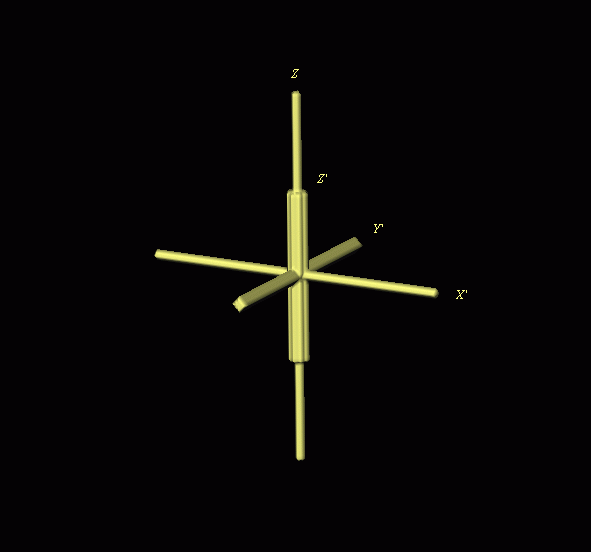The Euler angles in SPIDER & Web are defined as three successive rotations in a right hand coordinate system.
All rotations are done around axes of the original SPACE coordinate system and direction of rotation is determined by looking to the origin.
Note: If a volume is displayed in Web as slices, the observed rotations will be, COUNTERCLOCKWISE for 'phi' and 'psi' rotations around Z-axis and CLOCKWISE for 'theta' rotation around Y-axis. Web displays a volume with first slice on top.
The rotation matrices used are defined as:
v = Rv', where R is the matrix for transforming vector v' to vector v.
R = R(psi) * R(theta) * R(phi)
R(psi) = cos(psi) sin(psi) 0
-sin(psi) cos(psi) 0
0 0 1
R(theta) = cos(theta) 0 -sin(theta)
0 1 0
sin(theta) 0 cos(theta)
R(phi) = cos(phi) sin(phi) 0
-sin(phi) cos(phi) 0
0 0 1

An object consisting of 3 cylinders of different lengths and diameters that coincide with the three orthogonal axes was created using SPIDER.
The RT 3D SPIDER operation was used to rotate this object by Phi: 40 Theta: 50 & Psi: 70. A cylinder parallel to the rotation axis is embedded to the object before each rotation. Each rotation is done in 10 incremental steps to capture the position of the object for making the illustration. X', Y' and Z' are in the body coordinate system whereas Y and Z are in the space coordinate system.